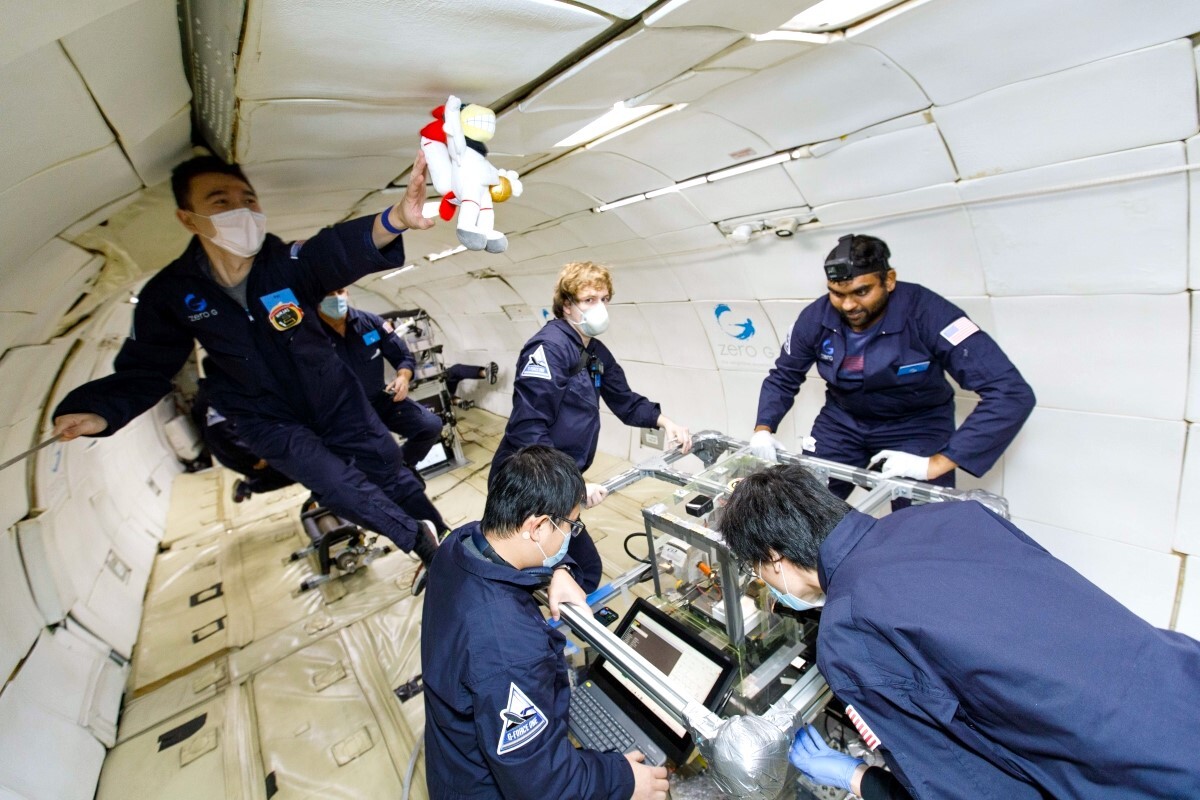Innovative 3D Printing Technology Takes Flight in Zero Gravity
In an ambitious endeavor to bring advanced manufacturing to space, researchers from Iowa State University have tested groundbreaking ink and printer technologies aboard NASA’s microgravity flights. This unique experiment aims to explore the potential of creating electric circuits and manufacturing high-value electronic components in the weightlessness of space.
Under the leadership of Shan Jiang, an associate professor of materials science and engineering at Iowa State, and Hantang Qin, now at the University of Wisconsin-Madison, the team has developed an innovative ink containing silver nanoparticles synthesized with biobased polymers. This ink, after a heat treatment, can conduct electricity, allowing for the printing of electric circuits. The printing technology used, known as electrohydrodynamic printing, enables ink to be jetted under an electric field at highly precise resolutions, potentially making gravity redundant for the deposition process.
Diving into Microgravity
The researchers secured their printer to the floor of a NASA jet, preparing for the intense experience of microgravity flights. These flights involve the aircraft climbing and diving between altitudes of 24,000 and 32,000 feet, creating brief periods of zero gravity. “It was exciting and new,” Jiang shared about the experience, despite the challenges posed by motion sickness and the need for precise equipment stabilization during the flights.
Initial trials faced hurdles due to the printer’s inadequate stabilization against the jet’s vibrations. However, the team made necessary adjustments, leading to improved results in subsequent test flights. As stated in their paper published in the American Chemical Society Applied Materials & Interfaces, this experiment demonstrates the potential for on-demand manufacturing in space using electrohydrodynamic printing.
Creating a New Nanoink
Jiang’s team pioneered a laboratory method to synthesize the ink using silver nanoparticles and a biobased polymer known as 2-hydroxyethyl cellulose. This material, often used as a thickening agent, proved to be a cost-effective, biocompatible, and versatile choice for the high-resolution printing required in the experiments. “There is a lot of biomass in Iowa,” Jiang noted, highlighting the state’s abundant resource that has been key to their innovation.
The project received support from the NASA Iowa Space Grant Consortium and the NASA Iowa Established Program to Stimulate Competitive Research. According to Sara Nelson, director of these programs, Jiang’s research significantly contributes to building Iowa’s research infrastructure and aligns with NASA’s strategic goals.
The Iowa State University Research Foundation has filed a patent for the nanoink, and the technology is available for licensing. Jiang emphasized the ongoing nature of this research, pointing towards future developments in 3D space printing for additional electronic components like semiconductors.
As Jiang aptly put it, “You can’t just make one component and assemble an electronic device.” The team’s work marks a significant step toward realizing the once science-fictional concept of manufacturing electronics in orbit.
Read More Here










